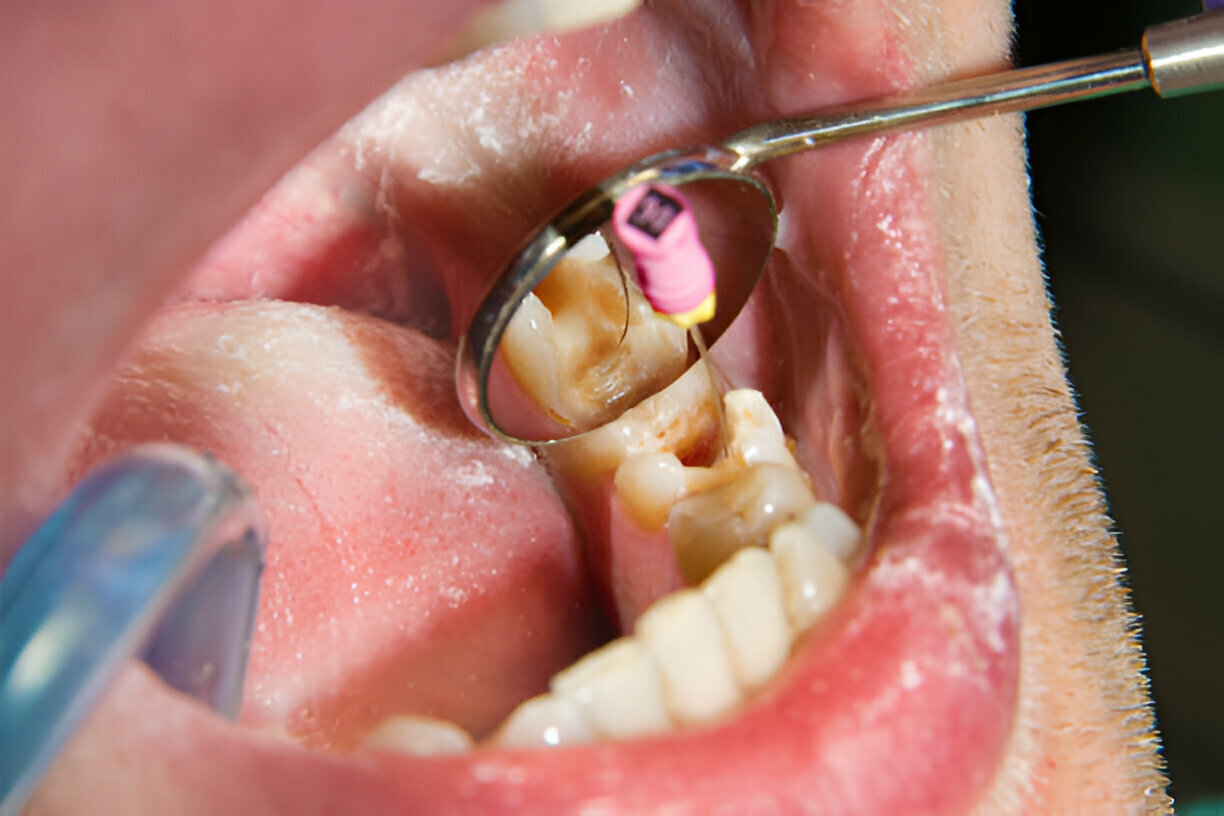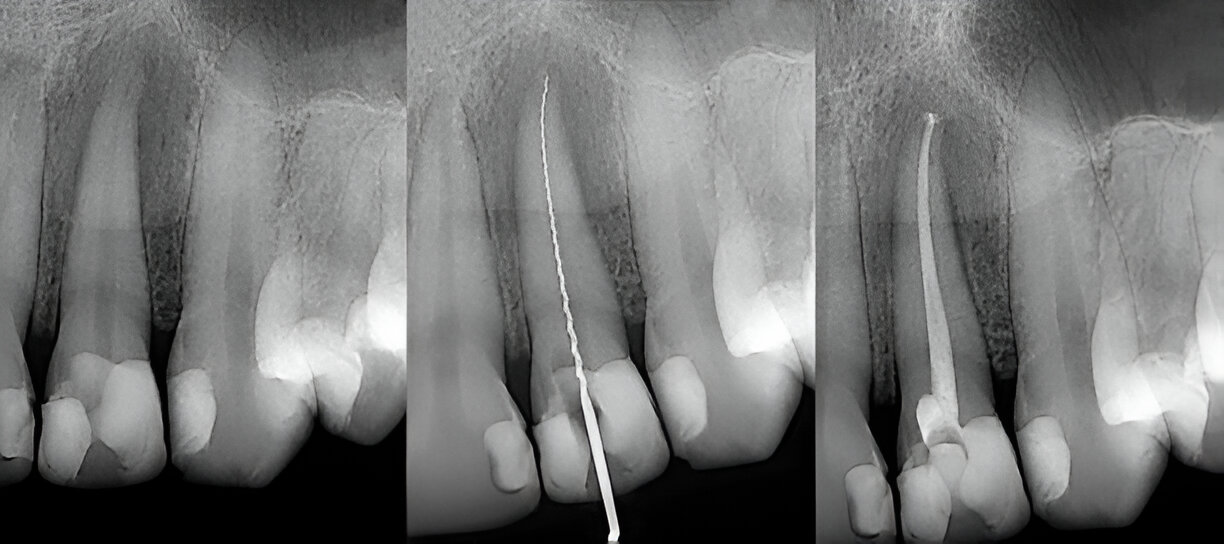Summary:
Sometimes, just hearing the word root canal can scare people and make them nervous.
Tooth pain or any kind of oral discomfort is unbearable, and getting dental treatments often adds to the anxiety. But a root canal is not something that one should be afraid of. It is a straightforward treatment process that preserves the natural tooth and alleviates pain for good.
With nearly 15 million root canals performed each year in the U.S., you’re definitely not alone in needing this care. Thus, finding the right dental clinic who have the expertise can make the experience comfortable and successful.
In this article, we will explore:
- Understanding Root Canal Treatment
- Experienced and Compassionate Dental Team
- Advanced Technology for Precise and Comfortable Treatment
Continue reading as this blog explores different aspects of root canals in the following sections.
Understanding Root Canal Treatment
A root canal is a dental treatment procedure performed when the pulp inside your tooth becomes damaged or infected.
Instead of removing the entire tooth, a root canal removes the infection, cleans the inside, and then seals it to prevent any further problems. This ensures that your natural tooth is preserved, which is often considered a preferable option to extraction.
When is a Root Canal Needed?
You might need a root canal if the following symptoms are present:
- Severe tooth pain that doesn’t go away
- Swelling or tenderness around the tooth or gums
- Sensitivity to hot or cold foods and drinks
- Darkening of the tooth or persistent discomfort
Why Timely Treatment Matters
Getting a root canal done immediately, as soon as you notice any of the mentioned signs, will prevent the infection from spreading further, and there will be a greater chance of saving your natural tooth. Ignoring the symptoms can lead to more pain, abscesses, or even tooth loss.
Experienced and Compassionate Dental Team
Our dental team at Sundance Gallup is highly qualified in their field and dedicated to making your visits as comfortable and smooth as possible.
Gentle, Patient-Frist Care
We completely understand the anxiety one might suffer from dental visits. This is why our team focuses on a calm, gentle approach that helps ease discomfort. Every patient who comes is treated with utmost care and patience, ensuring that they have a relaxed experience from start to finish.
Advanced Training and Expertise
Many of our dentists are specialists who have advanced training, such as endodontics, which enables them to provide their patients with expert care for procedures like root canals in Gallup, NM. This means that you can completely trust our professional team to handle complex treatments safely and efficiently.
Clear Communication Every Step of the Way
We believe in keeping our patients informed. Our teams explain every procedure in detail, in simple and easy-to-understand terms, before beginning any session. You will always know what to expect from the proceedings and how the treatments work.
Advanced Technology for Precise and Comfortable Treatment
With the advancement of modern technologies, dental treatment has come a long way, and so has root canal treatment. It has become more accurate, safer, and comfortable for patients. Using the latest model of tools, dentists can now perform the treatment with utmost care, precision, and excellence.
Digital X-Rays & 3D Imaging
Instead of using traditional X-rays, dentists now use digital imaging, which provides clear, detailed views of your teeth and roots. With the help of 3D imaging, dentists can now see exactly how the shape and length of your root canal follow. It helps to reduce guesswork and improve treatment accuracy.
Rotary Endodontics
With the help of rotary instruments, root canals can now be cleaned and shaped more efficiently. Using these tools, dentists can shorten the procedure time and make the treatment gentler on the tooth.
Sedation & Comfort Options
The use of modern sedation methods, such as mild nitrous oxide or local anesthesia, has significantly improved the patient’s experience. These sedations help patients to feel relaxed and pain-free during the entire procedure.
Why It Matters
By combining all these modern facilities, dentists can now perform root canals more efficiently, safely, and predictably. Patients report experiencing less discomfort, shorter appointments, and a smoother recovery, which makes advanced treatment stress-free and effective.
Focus on Patient Comfort and Care
Patients’ comfort has always been a top priority at Sundance of Gallup. From the moment you step inside, the clinic and our welcoming team assure you with a friendly, warm atmosphere which is designed to make everyone feel comfortable.
Pain Management and Sedation Options
Our team offers effective pain management and a range of sedation options for you, whether you are here for a routine check-up or a more complex procedure. The techniques that professionals follow ensure that both adults and children have a relaxed, stress-free experience.
Friendly and Efficient Service
Our professional team is attentive and highly approachable. This ensures that you can freely ask any questions you have regarding the treatment procedure and feel supported throughout the entire visit. In fact, dentists here do not believe in long waits. They are very regular and make sure that appointments are carefully scheduled.
Follow-Up Care
After your treatment, dentists in Gallup, NM, provide thorough follow-up care to ensure you are comfortable and healing well.
Proven Track Record and Local Trust
Years of Reliable Service
Through years of hard work and consistent high-quality service, Sundance Dental has built a strong reputation in Gallup, NM. Families here know they can easily rely on the clinic for both routine and complex dental treatments.
Trusted by the Community
Consistency and sound quality are key to running any business, and Sundance Dental Clinic has proven time and again that patients can expect excellent care. This trust that the patients show has made this clinic a preferred choice for complicated procedures like root canals, where skill and precision are essential.
Why Locals Choose Sundance
- Personalized attention for every patient
- Reliable and lasting results
- A friendly team that puts comfort first
- Expert care for complex dental treatments
Comprehensive Dental Services Beyond Root Canals
All-in-One Care
A good dental clinic not only provides root canal service but also:
- Preventive care, like cleanings, check-ups, and fluoride treatments
- Cosmetic dentistry, such as teeth whitening, veneers, and smile makeovers
- Restorative treatments, including crowns, bridges, and dental implants
Convenience & Continuity
Having all these mentioned under one roof makes life easier. You no longer have to ask from one clinic to the next for different needs. Additionally, your dentist must be aware of your oral history, which enables smoother treatment planning.
Takeaway
- Sundance of Gallup combines advanced technology with skilled, compassionate dentists to make root canal treatments safe and comfortable.
- From sedation options to gentle care and clear communication, patients’ comfort and peace of mind are a top priority.
- Years of reliable service, personalized attention, and proven results make Sundance the go-to choice for dental care in Gallup, NM.

















